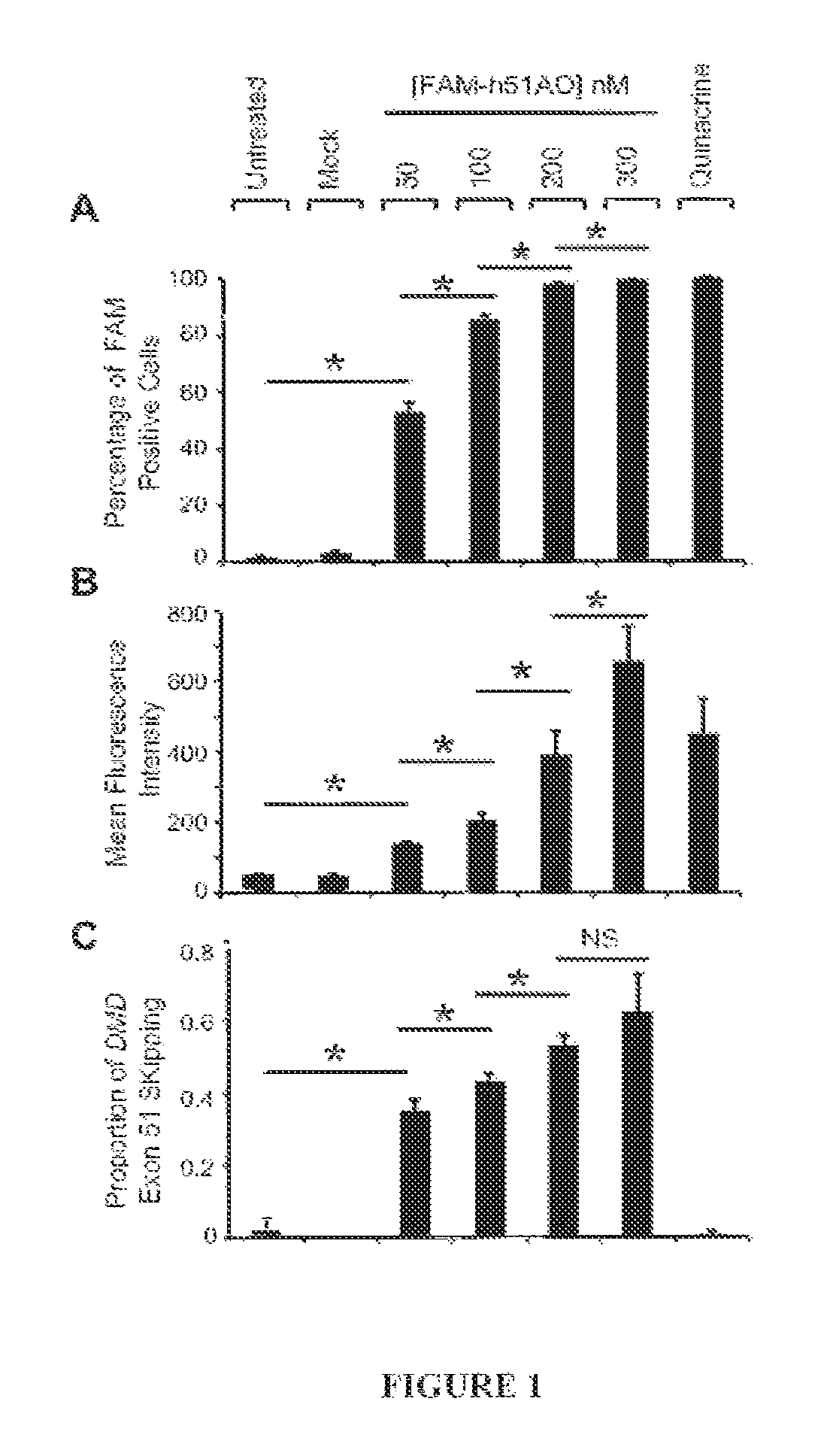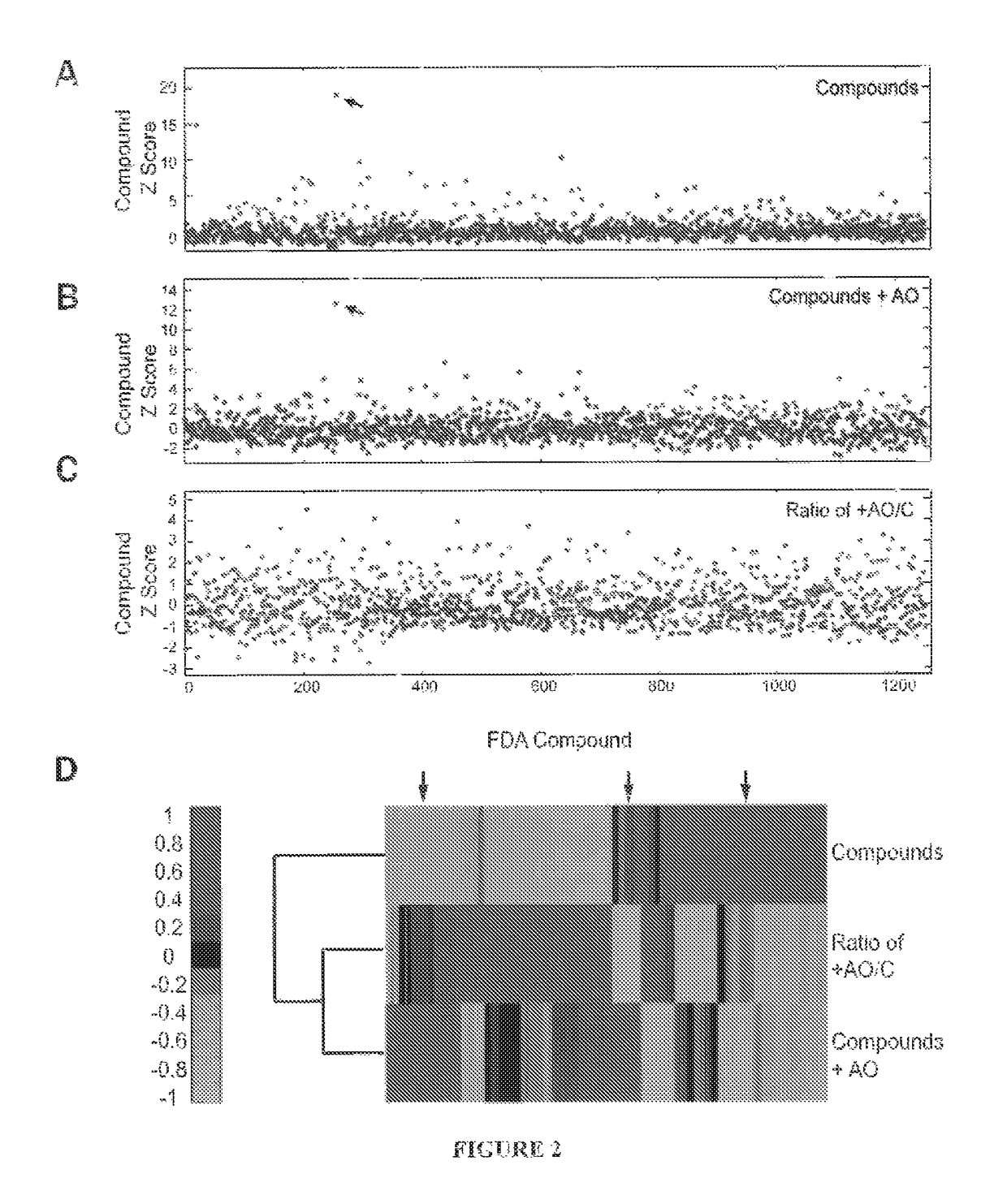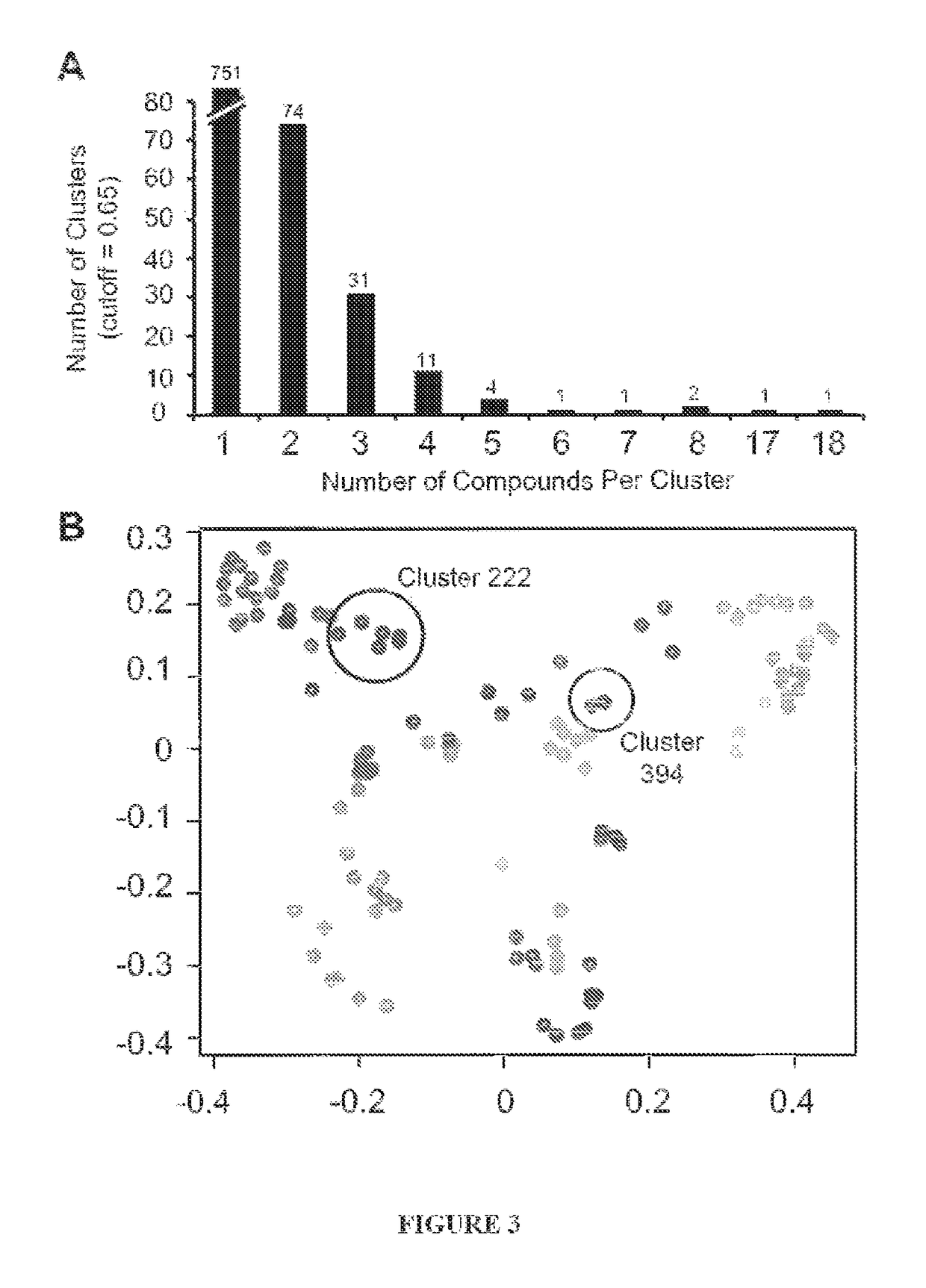Identification of structurally similar small molecules that enhance therapeutic exon skipping
a small molecule and exon skipping technology, applied in the direction of biochemistry apparatus and processes, drug compositions, muscular disorders, etc., can solve the problems of patient death, no fda approved therapy directly addresses the underlying genetic defect, and respiratory or cardiac complications
- Summary
- Abstract
- Description
- Claims
- Application Information
AI Technical Summary
Benefits of technology
Problems solved by technology
Method used
Image
Examples
example i
and Methods
High-Throughput Screen in the Ex50GFP Reporter Cell Line
[0100]A stable clone was generated from C2C12 cells transfected with a human exon-50 DMD GFP reporter (ex50GFP) [32]. Ex50GFP myoblasts were seeded at a density of 4,000 cells per well into uncoated 384 well plates in myoblast growth media (Phenol red free DMEM, 15% FBS, 1× L-glutamine and 1× Pen / Strep). Cells were incubated for 4 hours either with or without (n=2 replicates), 300 nM of 2′-O-methyl phosphorothioate h50AON (−19+8) 5′-AACUUCCUCUUUAACAGAAAAGCAUAC-3′] (SEQ ID NO:1) targeting exon 50 skipping by masking the intron-exon boundary at the 3′ intron 49 splice acceptor site. h50AON was transfected using FUGENE (Roche) at a ratio of 3 μL FUGENE:1 μg DNA. Following h50AON incubation, the Prestwick library (n=1120, across 4 plates) was screened in duplicate at a 10 μM concentration with a final concentration of 1% DMSO carrier. The final well volume was 50 μL. Forty-eight hours later DNA was stained with Hoescht (...
example ii
Correlation Between AO Uptake and Exon Skipping Activity
[0108]We explored the relationship between antisense oligonucleotide uptake and how it correlates to exon skipping activity in a cell culture system. To do this we used a 5′ FAM labeled 2′OMe AO so that cellular uptake could be directly measured by flow cytometry and then related to DMD exon 51 skipping activity in iDRM5017. After plating and seven days of fusion, FAM-h51AON was added to the cells for 24 hours after which it was removed. Forty-eight hours later each well was harvested and split for analysis; one half designated for analysis by flow cytometry and the other half analyzed for exon 51 skipping activity by RT-PCR and capillary electrophoresis. We found that there was a dose dependent increase in the percentage of FAM positive cells (FIG. 1a). At the highest doses of 200 nM and 300 nM of FAM-h51AON the proportion of positive cells was nearing 100% of the entire population, and was almost indistinguishable from the po...
example iii
and Conclusions
[0121]DMD is one of the most common childhood forms of muscular dystrophy with no effective pharmacological therapies. Antisense oligonucleotides in clinical development target single exons for skipping, which restore the mRNA reading frame in a subset of DMD patients. To date, one of the main limitations with antisense based strategies is that the majority of systemically administered AO is cleared by the kidney instead of reaching the intended target, skeletal and cardiac muscle [48]. This has prompted studies focusing on improving AO efficacy, with strategies ranging from more efficient delivery methods to the identification of independent molecular targets [30-33]. Another possibility for the observed inefficiencies is that even with the highest doses of AO in cells, all DMD mRNA transcripts are not efficiently skipped. These limitations are not mutually exclusive, and both can be addressed by the identification of distinct molecular targets that enhance exon skip...
PUM
| Property | Measurement | Unit |
|---|---|---|
| volume | aaaaa | aaaaa |
| size | aaaaa | aaaaa |
| stability | aaaaa | aaaaa |
Abstract
Description
Claims
Application Information
 Login to View More
Login to View More - R&D
- Intellectual Property
- Life Sciences
- Materials
- Tech Scout
- Unparalleled Data Quality
- Higher Quality Content
- 60% Fewer Hallucinations
Browse by: Latest US Patents, China's latest patents, Technical Efficacy Thesaurus, Application Domain, Technology Topic, Popular Technical Reports.
© 2025 PatSnap. All rights reserved.Legal|Privacy policy|Modern Slavery Act Transparency Statement|Sitemap|About US| Contact US: help@patsnap.com



